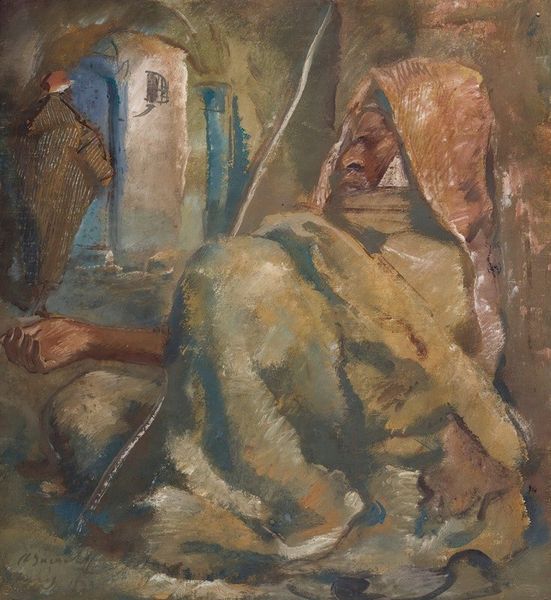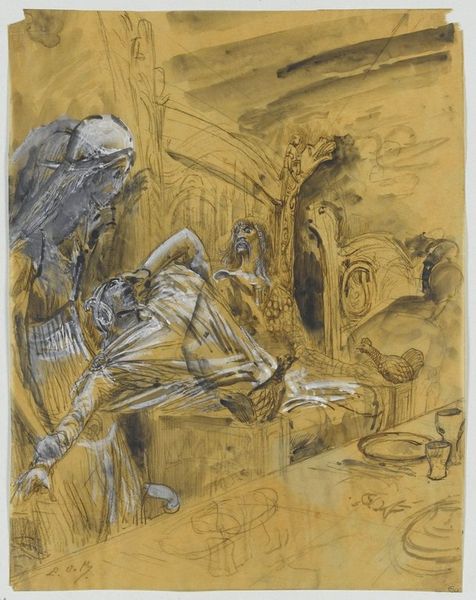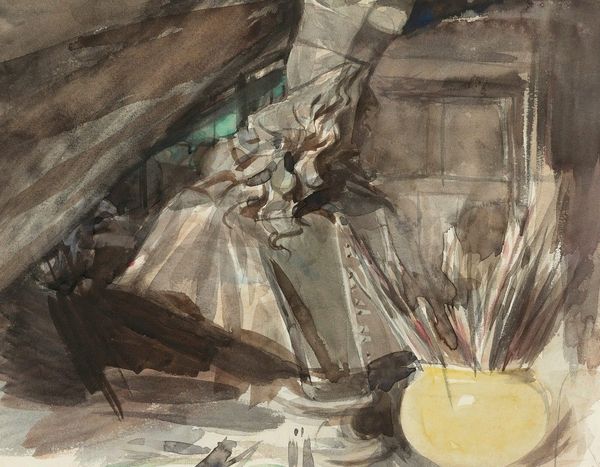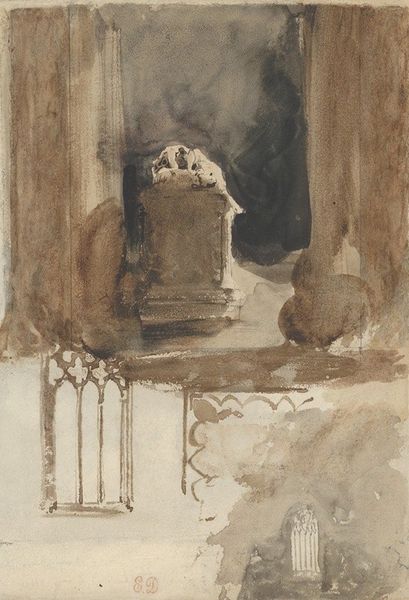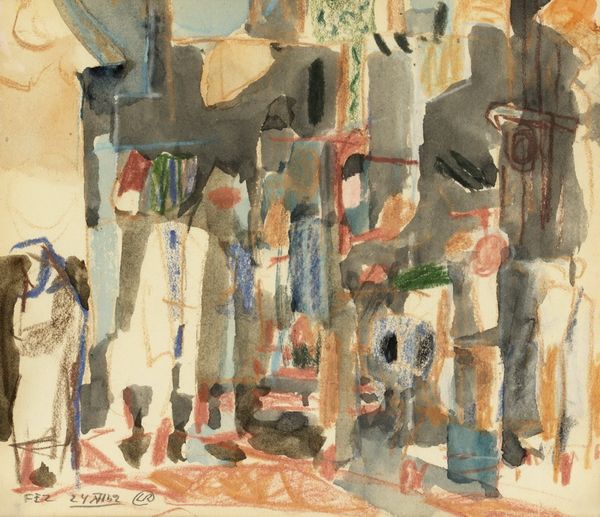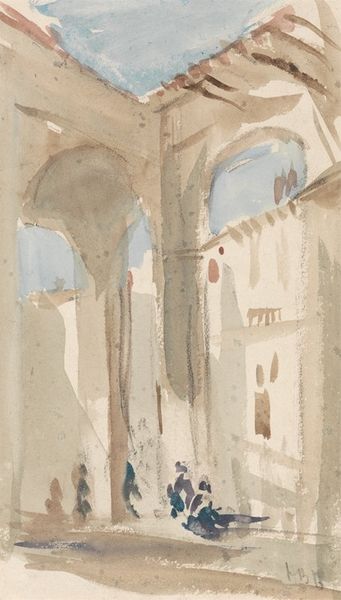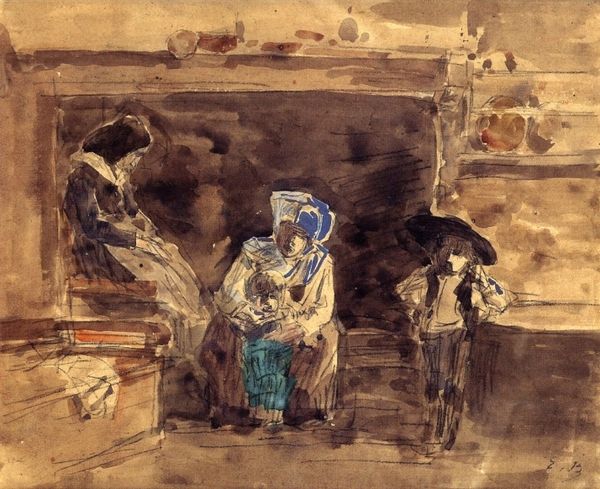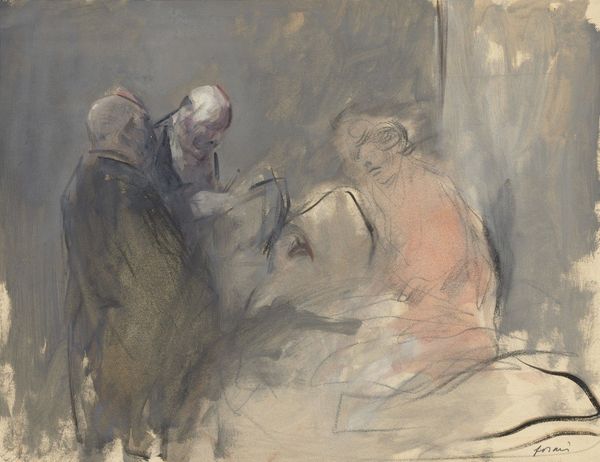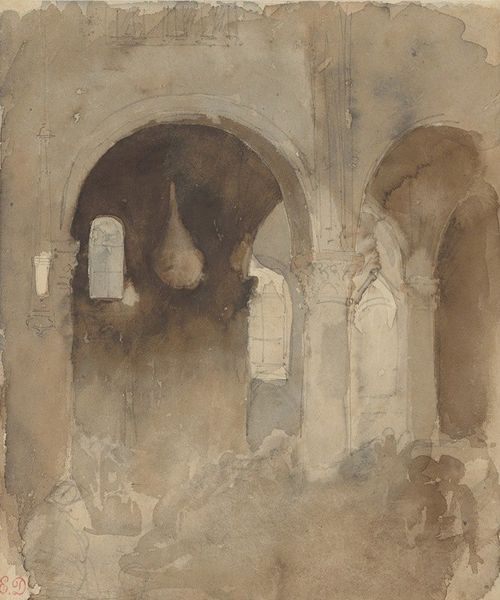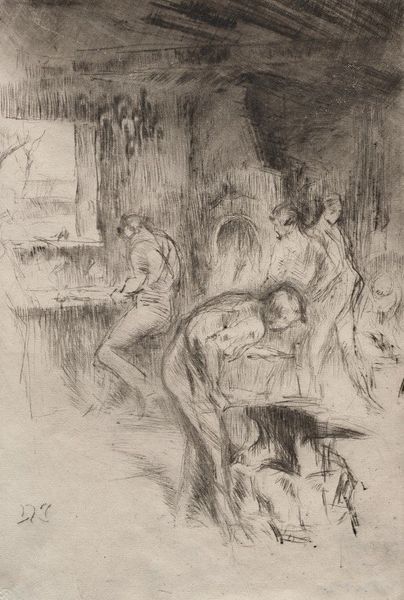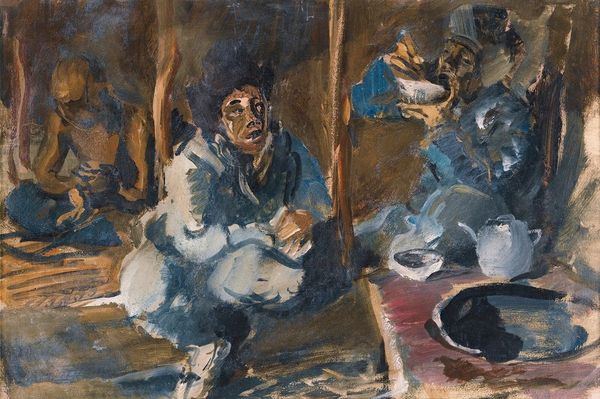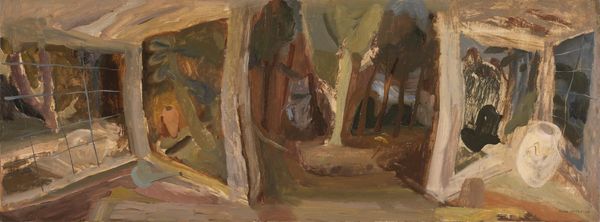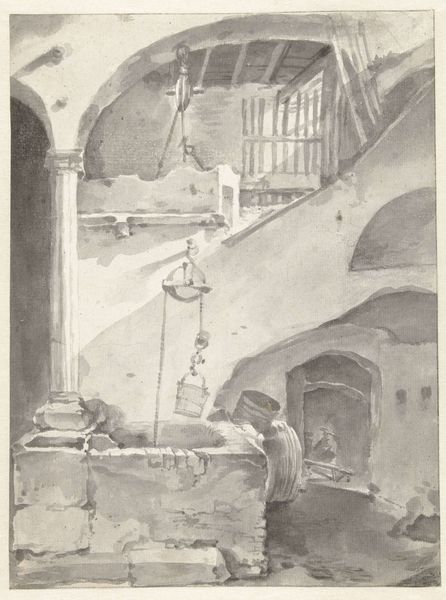
painting, oil-paint
#
portrait
#
painting
#
oil-paint
#
landscape
#
figuration
#
oil painting
#
orientalism
#
genre-painting
#
realism
Copyright: Public Domain: Artvee
Editor: Here we have Alexandre Jacovleff's "In einem Hammam in Tunis," painted in 1930 with oil paints. There's a sort of raw, unfinished quality about it; it makes me think about the everyday realities of labor, far removed from idealised orientalist fantasies. What do you see here? Curator: I see a fascinating representation of labor and class. Jacovleff, while adopting the visual language of Orientalism, also provides a glimpse into the processes of cleaning and physical labour associated with the hammam. The oil paint itself becomes a vital medium, mimicking the very materials these figures would have interacted with: water, stone, and perhaps cleansing pastes. Editor: So, you're focusing on how the painting technique reflects the material culture being depicted? Curator: Precisely! Consider how the rough brushstrokes render the architecture and the human bodies, exposing a social hierarchy related to who gets to enjoy the cleaned space versus who performs the cleaning. Notice how even the composition guides our eyes to observe not beauty, but the mechanics of this labor. Are these idealized figures or something else entirely? Editor: It’s almost like the act of painting becomes another form of labor in itself, mirroring what’s depicted. The hammam seems less exotic now, and more a site of work. Curator: Exactly. We're invited to analyze not just the image, but the system of production behind the scenes – the real socio-economic implications of art. Even the light from that opening suggests scrutiny more than romanticism. It is an examination of how cultures are encountered and translated through material realities. Editor: I didn't initially consider how much the technique contributes to that narrative. I am now seeing that this painting might provide more insights than it appears at first. Curator: Indeed. Jacovleff challenges us to acknowledge art's own implication within structures of labor, challenging established perceptions by asking where are value truly lies?
Comments
No comments
Be the first to comment and join the conversation on the ultimate creative platform.
